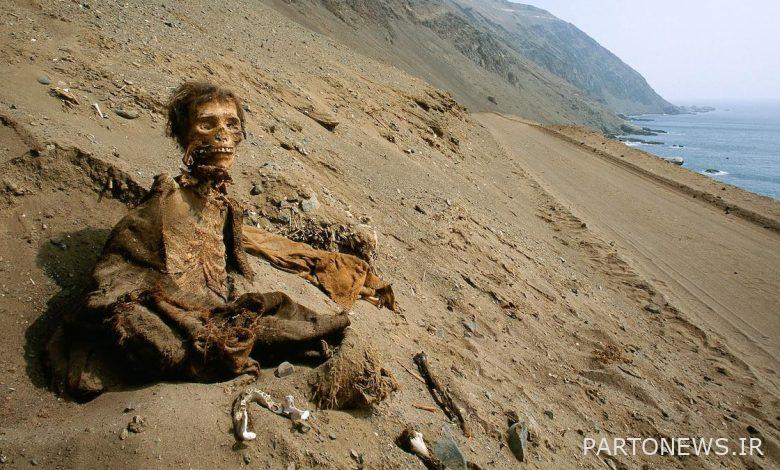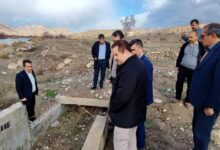The peaceful life of the Chinchuro people with 7,000-year-old mummies

According to the Aria Heritage Report, the Chinchurro Mummy is housed in the Tarapaka University Museum. The mummy belongs to a boy between the ages of six and seven, and radiocarbon dating shows it is more than 4,100 years old. The city of Arica on the Peruvian border is built on the sand dunes of the Atacama Desert, the driest desert in the world. But long before the seaside town was founded in the 16th century, the area was home to the Chinchuro people.
The culture of the Chinchuro people went viral in July, when the UN Cultural Organization added hundreds of mummies preserved by them to its World Heritage List.
Chinchorro mummies were first recorded in 1917 by German archaeologist Max Ohle, who found some bodies on a beach. But it took them decades to determine their age.
Radiocarbon dating experiments eventually showed that these mummies were more than 7,000 years old, 2,000 years earlier than the more popular Egyptian mummies.
In the culture of the people of this region, it was believed that mummification was a way to keep the memories of the dead alive. Given the age of these mummies, it can be concluded that chinchuro mummies are the oldest known archaeological evidence of human mummified bodies.
“The people of Chinchoro made the mummy process for the first time,” says anthropologist Bernardo Ariaza. They used this method to bury and preserve corpses, not to leave the dead for natural embalming in dry climates. “However, some naturally embalmed bodies have also been found in these places.”
He goes on to explain that small incisions were made in the body to remove internal organs. The cavities were then dried and the skin of the corpse was removed.
The people of Chinchuro then filled the body with natural fibers and woods before using the straw to sew the skin to keep it smooth and thick. They also attached thick black hair to the mummy’s head and covered her face with clay and a mask with holes for her eyes and mouth.
Finally, the bodies were painted red or black using mineral pigments, red soil, manganese, and iron oxide.
“The Chinchoro people’s methods and approach to embalming were significantly different from those of the Egyptians,” says Ariaza. “Not only did the Egyptians use oil and bandages, but the process of embalming the bodies of the elite was preserved, while the people of Chinchuro embalmed men, women, children, infants and even fetuses, regardless of their condition.”
Living with the dead
With hundreds of mummies found over the past century in Arica (Chile) and elsewhere, locals have learned to live next to and even above mummified cemeteries.
The discovery of human remains during construction work or the removal of a number of mummies by hounds is something that indigenous peoples have experienced extensively. But for a long time they did not realize how important these ancient remains were.
“Sometimes locals tell us stories of children using skulls for football and taking off their clothes from mummies, but now they know they can tell us when they find something,” said archaeologist Janina Campos Fuentes.
Anna Maria Nito and Paula Pimentel lead associations near the two drilling sites and have worked closely with a team of scientists at Tarapaka Local University to help the community understand the importance of Chinchuro culture and ensure that valuable sites are cared for. They are excited that UNESCO has recognized the importance of Chinchuro culture.
There are currently plans for a local museum; Where rows of chinchuro remains are placed under reinforced glass for visitors to look at. Only a small portion of the 300 Chinchuru mummies are now on display. Most of them are kept in the San Miguel de Azapa Archaeological Museum.
Officials are planning to build a larger museum on the site to house more mummies, but sufficient funds are needed to ensure they are properly maintained so that they do not deteriorate.
Ariaza and Janina Campos, a local archaeologist, are also convinced that Arika and the surrounding hills contain many treasures that have not yet been discovered. However, more knowledge and expertise is needed to find them.
Gerardo Mayor Spindola Rojas hopes the addition of mummies to the World Heritage List will boost tourism and attract extra investment.
“Any development must be done in the right way, with the cooperation of the community and the protection of the sites,” he said. Unlike Rome, which is located on historical monuments, the people of Arica live on human remains, and we must protect the mummies. “Currently, there are city laws, and archaeologists are present whenever construction work is done to make sure that precious debris is not damaged.”
He believes that unlike some other areas of Chile, where tour operators and multinational corporations have purchased land to benefit from tourist attractions, Arica’s heritage should remain in the hands of its people and benefit the local community.
The president of the neighborhood association, Anna Maria Prieto, believes that the newly discovered fame of the mummies will benefit everyone.
“This is a small, intimate town,” he says. “We want tourists and scientists from all over the world to come and learn new things about the incredible culture of Chinchuro that we have lived with all our lives.”
* Translation: Anahita Rashidi
.

